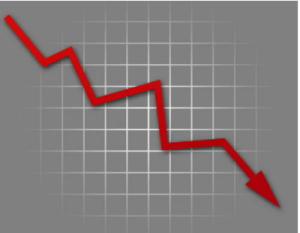
By Jeff Warren
JULY, 2022

Performance through 6/30/2022
The overall stock and bond markets have suffered significant losses, which is apparent. Although overall commodity prices, led by energy and agricultural crops like wheat and corn, have been exceptional, the month of June indicates the continuation of a sharp reversal in commodity prices from their highs a few months ago.
Please note that the purpose of this communication is to provide context that I believe will help you view the current conditions with greater understanding (as it relates to your investments).
1. The mutual funds you own (equity or bond) are “blue chip” companies and assets as well as best in class fund managers. The individual company stocks have the same pedigree. This is especially important in times like these. We want the most experienced managers, and companies that are leaders in their industries. When markets have unusual losses, due to a weakening economy or other major headwinds like wars or pandemics, those who rely on dividends for any reason need stability and durability of those dividends. The income stream should stay steady (or rise) during these times.
2. We are investors, not short-term traders. The companies and assets in the portfolios have the financial quality and value to their customers that creates the confidence warranting investing with them.
3. I would like to provide an example of a mutual fund and individual company we have allocated to most accounts that are growth and income oriented. When the net asset value of a mutual fund declines or a stock loses share value, it is natural to have some level of concern or discomfort. It is helpful to understand the “mechanics,” to put the situation in perspective.
Example #1 – Mutual Fund: PIMCO Income Fund (PIMIX) pays dividends monthly
§ Jan.1 opening balance $50,000… Dividend as annualized percentage = 4.92%
§ Based on the shares owned Jan. 1, dividend would be $2460 annualized or $205 per month
§ IT is now June 30, and our fund has a loss showing of 8.53 % year to date ($45,735 account value)
§ Because we own the same number of shares as we did on Jan.1; and despite the change in the account value displayed (now $45,735) our dividends continue at the $205 a month rate.
The equation is: # shares owned multiplied by the dividend distribution per share. Therefore, we seek out funds and investments that have a record of stability paying dividends to shareholders, even when times are tough. (The PIMCO funds also have a habit of fully recovering losses in short order.)
Example #2- Individual Company Stock: Hannon-Armstrong Sustainable Infrastructure (HASI) Stocks generally pay their dividends quarterly.
§ Jan.1 opening balance (value of shares) 200 shares@ $53.12 per share price =$10,624
§ Distribution Dividend rate per share =$ 0.375 … 200 shares multiplied by 0.375 = $75 (quarterly dividend)
§ June 30 -Share price is $37.86 loss of 28.72 % -share value now showing $7,572.78
§ We still own 200 shares (unless we reinvest, then we own more) and the dividend will be $75 each quarter
To summarize:
Owning strong dividend paying funds or stocks is a good strategy for the current economic/market situation, whether you take the cash or reinvest.
The stocks and stock funds we (you) own are positioned for strong long-term growth. We believe they are in a group of industries likely to be leaders in the future economy. This includes: Digital Infrastructure, Data Centers, Renewable Energy producers and utilities, technology for making materials that are sustainable, and traditional high-quality real estate.
Owning Fixed Income/Bond Funds that are diversified and pay sustainable dividends. Accessing the best managers and firms that can access the best opportunities (PIMCO)
A question for you:
Are you satisfied that the investment choices and strategy employed at this time? If there are questions about this, please contact me! Achieving your immediate and long-term financial objectives is the most important job we have.
Sincerely
Jeff Warren
